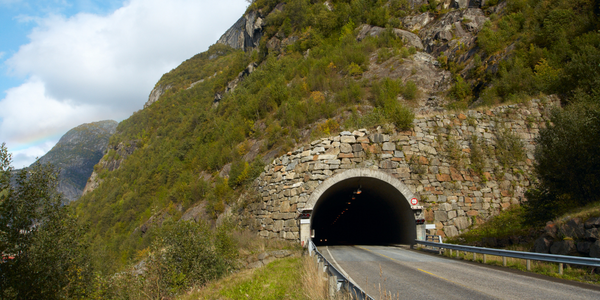技术
- 分析与建模 - 数字孪生/模拟
- 传感器 - 温度传感器
适用行业
- 建筑物
- 建筑与基础设施
适用功能
- 物流运输
- 产品研发
用例
- 数字孪生
- 虚拟原型与产品测试
服务
- 系统集成
关于客户
Johnson Pilton Walker (JPW) 是一家屡获殊荣的建筑公司,也是帕拉马塔广场城市更新计划的主导设计公司。该项目耗资 6 亿澳元,旨在拓宽城市天际线,融入尖端、可持续、世界一流的设计,体现全球建筑的最高标准。 JPW 的任务是设计一座标志性的、可持续的塔楼结构,作为西悉尼城市复兴和再开发的一部分。由于其位置、规模以及地方当局实施的严格指导方针,该项目具有挑战性。 JPW 负责与多个工程学科和顾问合作来交付该项目。
挑战
Johnson Pilton Walker (JPW) 的任务是设计一座标志性的、可持续的塔楼结构,作为西悉尼城市复兴和再开发的一部分。该项目被称为帕拉马塔广场,是西悉尼城市更新计划的一部分,旨在振兴澳大利亚第二古老的市中心。该项目具有挑战性,因为它毗邻一个主要火车站,道路通道有限,而且位于帕拉马塔河附近的洪泛区。该项目需要仔细的基础设施规划和设计,以确保建筑和公共领域无缝集成。地方当局制定了严格的指导方针,以解决遗产背景、太阳能利用、能源效率、可持续性、灵活的工作空间和行人通透性等问题。大规模的建筑形式,加上加快的时间表,带来了一系列的设计和交付挑战。
解决方案
为了克服这些挑战并实现所有项目目标,JPW 实施了数字 BIM 解决方案来简化工作流程并优化设计。他们依靠 OpenBuildings Designer 根据传统 BIM 原则对地下室、裙楼和核心筒进行建模。他们集成了几何驱动设计方面的计算设计(包括立面、塔楼结构和天花板),以提高 BIM 和工作流程效率。 GenerativeComponents 与 Excel 的互操作性允许与地板、梁和柱的表格结构工程数据进行交互。然后,团队可以使用 Excel 中的条件格式功能来加载、检查和生成塔结构的计算设计模型。该团队生成了独特面板和翅片的多种变体,以适应不断变化的面板半径和不同的翅片深度。该团队使用 OpenBuildings Designer 生成了一个独特的脚本,该脚本将多边形网格建立为信封。网格包围了建筑物,其中每个多边形都经过参数化建模以简化修改,并代表立面系统中的面板类型。
运营影响
数量效益

Case Study missing?
Start adding your own!
Register with your work email and create a new case study profile for your business.
相关案例.

Case Study
Energy Saving & Power Monitoring System
Recently a university in Taiwan was experiencing dramatic power usage increases due to its growing number of campus buildings and students. Aiming to analyze their power consumption and increase their power efficiency across 52 buildings, the university wanted to build a power management system utilizing web-based hardware and software. With these goals in mind, they contacted Advantech to help them develop their system and provide them with the means to save energy in the years to come.

Case Study
IoT System for Tunnel Construction
The Zenitaka Corporation ('Zenitaka') has two major business areas: its architectural business focuses on structures such as government buildings, office buildings, and commercial facilities, while its civil engineering business is targeted at structures such as tunnels, bridges and dams. Within these areas, there presented two issues that have always persisted in regard to the construction of mountain tunnels. These issues are 'improving safety" and "reducing energy consumption". Mountain tunnels construction requires a massive amount of electricity. This is because there are many kinds of electrical equipment being used day and night, including construction machinery, construction lighting, and ventilating fan. Despite this, the amount of power consumption is generally not tightly managed. In many cases, the exact amount of power consumption is only ascertained when the bill from the power company becomes available. Sometimes, corporations install demand-monitoring equipment to help curb the maximum power demanded. However, even in these cases, the devices only allow the total volume of power consumption to be ascertained, or they may issue warnings to prevent the contracted volume of power from being exceeded. In order to tackle the issue of reducing power consumption, it was first necessary to obtain an accurate breakdown of how much power was being used in each particular area. In other words, we needed to be able to visualize the amount of power being consumed. Safety, was also not being managed very rigorously. Even now, tunnel construction sites often use a 'name label' system for managing entry into the work site. Specifically, red labels with white reverse sides that bear the workers' names on both sides are displayed at the tunnel work site entrance. The workers themselves then flip the name label to the appropriate side when entering or exiting from the work site to indicate whether or not they are working inside the tunnel at any given time. If a worker forgets to flip his or her name label when entering or exiting from the tunnel, management cannot be performed effectively. In order to tackle the challenges mentioned above, Zenitaka decided to build a system that could improve the safety of tunnel construction as well as reduce the amount of power consumed. In other words, this new system would facilitate a clear picture of which workers were working in each location at the mountain tunnel construction site, as well as which processes were being carried out at those respective locations at any given time. The system would maintain the safety of all workers while also carefully controlling the electrical equipment to reduce unnecessary power consumption. Having decided on the concept, our next concern was whether there existed any kind of robust hardware that would not break down at the construction work site, that could move freely in response to changes in the working environment, and that could accurately detect workers and vehicles using radio frequency identification (RFID). Given that this system would involve many components that were new to Zenitaka, we decided to enlist the cooperation of E.I.Sol Co., Ltd. ('E.I.Sol') as our joint development partner, as they had provided us with a highly practical proposal.

Case Study
Intelligent Building Automation System and Energy Saving Solution
One of the most difficult problems facing the world is conserving energy in buildings. However, it is not easy to have a cost-effective solution to reduce energy usage in a building. One solution for saving energy is to implement an intelligent building automation system (BAS) which can be controlled according to its schedule. In Indonesia a large university with a five floor building and 22 classrooms wanted to save the amount of energy being used.

Case Study
Powering Smart Home Automation solutions with IoT for Energy conservation
Many industry leaders that offer Smart Energy Management products & solutions face challenges including:How to build a scalable platform that can automatically scale-up to on-board ‘n’ number of Smart home devicesData security, solution availability, and reliability are the other critical factors to deal withHow to create a robust common IoT platform that handles any kind of smart devicesHow to enable data management capabilities that would help in intelligent decision-making

Case Study
Splunk Partnership Ties Together Big Data & IoT Services
Splunk was faced with the need to meet emerging customer demands for interfacing IoT projects to its suite of services. The company required an IoT partner that would be able to easily and quickly integrate with its Splunk Enterprise platform, rather than allocating development resources and time to building out an IoT interface and application platform.








